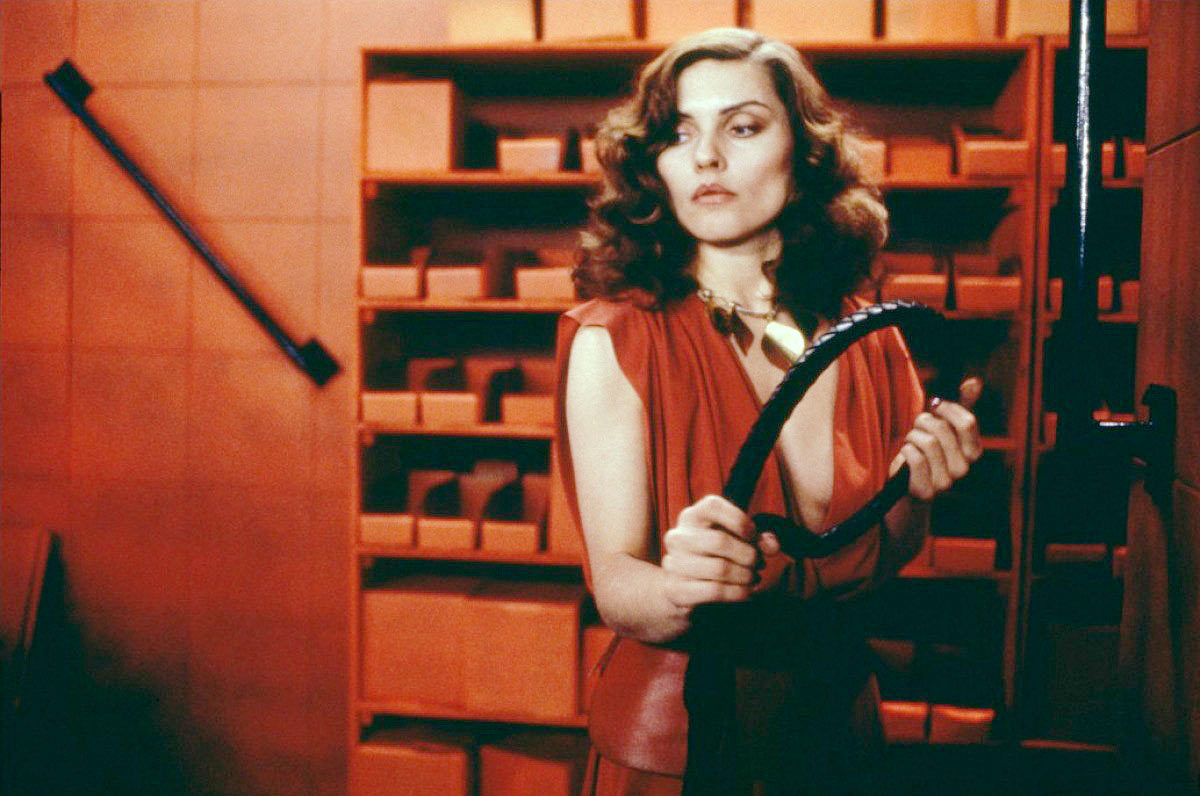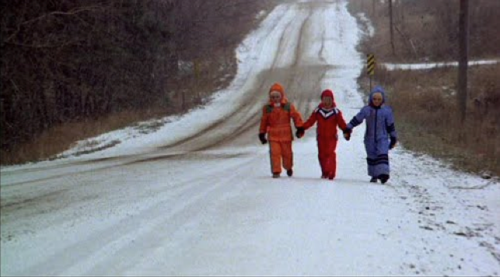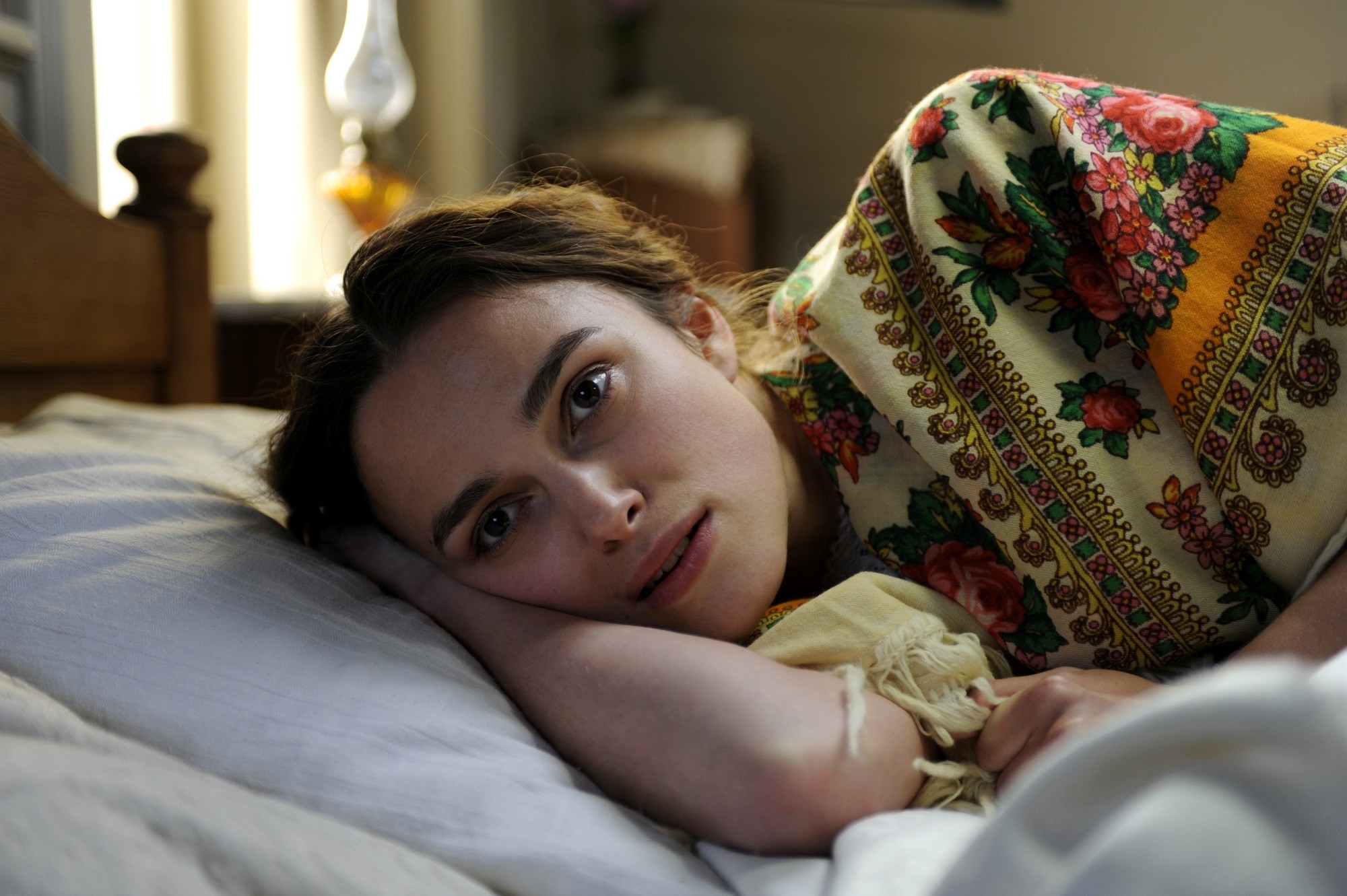This guest post written by Stefan Sereda appears as part of our theme week on Ladies of the 1980s.
“The beams become my dream
My dream is on the screen.”
— Blondie, “Fade Away and Radiate”
In Paul Schrader’s 1972 article, “Notes on Film Noir,” the soon-to-be screenwriter-director predicted with accuracy that the noir style would experience a revival in the decade ahead. While the list of New Hollywood noir films is too extensive to list here, encompassing everything from Point Blank (1967) to Blade Runner (1982) and several of Schrader’s own efforts, the Hollywood Renaissance is also known for genre revisionism, and one film noir convention that all but disappeared in the 1970s was the femme fatale.
Critics and audiences argue about whether classical femme fatales were “progressive” representations of American womanhood. From one perspective, fatales such as Kitty Collins (Ava Gardner) in The Killers (1946) and Kathie (Jane Greer) in Out of the Past (1947) embodied paranoia about crime, urban decay, family collapse, capitalist competition, and the sexual promiscuity associated with mid-century American womanhood. Of course, the villainous femme fatale archetype gained popularity in a decade wherein men found themselves competing with women in the workplace. On the other hand, femme fatales exercised agency and autonomy, unlike women found in most classical genres and especially in contrast to their domesticated “good girl” foils in noir. Although femme fatales were always destructive manipulators punished for their transgressions, these bad girls were resourceful and ambitious drivers of their own agenda who weaponized their sexuality.*
In the 1970s, film noir’s women were recast as social victims. The most glaring example of the femme fatale’s reformation takes place in Roman Polanski’s Chinatown (1974), where Evelyn Mulwray (Faye Dunaway) is a false suspect who only lies to protect her daughter, the offspring of an abusive, incestuous relationship with her father. Deadly women lurked off to horror films such as Brian De Palma’s Sisters (1973) and Carrie (1976). By 1981, the femme fatale came sauntering back wearing ironic virgin white when Kathleen Turner appeared as Matty Walker in Body Heat (1981). Blade Runner (1982) featured two fembots-turned-fatale (and another faux–fatale) whereas David Cronenberg’s sci-fi-horror-noir Videodrome (1983) updated the femme fatale as a response to media-saturated late twentieth-century culture.

A Postmodern Fatale
Andy Warhol hailed Videodrome as “A Clockwork Orange of the 80s.” The Canadian film stars James Wood as Max Wren, a television producer-turned-amateur detective looking for “something that will break through,” until he finds “Videodrome,” a pirate broadcast showing only detached scenes of torture and murder. Max is captivated, but “who would want to watch a scum show like Videodrome?” Max’s casual girlfriend, Nicki Brand, played by Deborah “Debbie” Harry of Blondie fame, is certainly an enthusiast.
Max first meets Nicki on a talk show, where they debate mediated sex and violence. Nicki bemoans contemporary Western existence as “overstimulating times,” but Max challenges her for wearing red (it’s worth noting the famous blonde appears with red hair in Cronenberg’s film), suggesting, “You know what Freud would say about that dress?” Nicki confesses Max is right about her — she also hosts the “Emotional Rescue” show, a talk radio advice program where she blithely addresses her callers as “lover,” signaling her detached post-sexual revolution approach to intercourse and personal attachment, if not her listeners’ attitudes as well. Nicki is a forward first date: the scene cuts to Max’s apartment, where she flippantly inquires, “Got any porno?” Nicki finds a copy of “Videodrome,” which she admits is a turn-on, despite it having no ostensibly sexual content. Max quips, it’s “torture, murder… not exactly sex,” but Nicki answers, “Says who?” She also reveals a history of S&M with “a friend” who she let cut her, and encourages Max to pierce her ear as foreplay while “Videodrome” plays in the background.
It soon becomes apparent Nicki is more sexually versed than Max and beyond his containment, as she progressively seems less naïve than she first appeared in each of her scenes. When Nicki announces she’s going to audition for “Videodrome,” Max warns her “these mondo weirdo video guys… they play rough… rougher than even Nicki Brand wants to play.” Nicki responds with a fatale’s obstinacy, extinguishing a cigarette on her breast. The next time Max sees Nicki, she’s performing on “Videodrome.”
Besides what Freud might call the subconscious “death drive” apparent in her masochism, Nicki shares superficial characteristics with the archetypal fatale. Her makeup and dresses recall the 1940s. As with many fatales, and Harry in real life, Nicki is self-aware of her status as a sex object, to the point where she craves objectification. In a screenplay loaded with double entendres, the name “Nicki” sounds sharp, but also resounding with the false innocence of fatale names like Kathie, Kitty, and Matty. “Brand,” on the other hand, connotes medieval torture and image commodities. Eventually, Max learns a corporate brand, Spectacular Optical, developed “Videodrome” as a mass brainwashing device in preparation for global warfare. Through “Videodrome,” Nicki — or, at the very least, the fatale’s simulacrum — ensnares, tortures, and directs Max.
Moreover, Cronenberg casts Harry to perfection. Before appearing in Videodrome, Harry was already a postmodern shapeshifter, the only woman to be a Playboy Playmate, a punk rock phenom, a pop star, and a household name big enough for The Muppet Show. A New Yorker up on the trends, she was even rapping as early as 1980. Blondie sprinted along a razor line between punk and pop, attracting Andy Warhol’s attention: his likeness of Harry graces the cover of Phaidon’s Andry Warhol Portraits.
Several Blondie songs, some with Harry-penned lyrics, demonstrate what made Harry an ideal choice for the role of a thrill-seeking sex obsessed woman adrift in a consumer-capitalist landscape. On the BDSM-themed debut album opener, “X-Offender,” she plays a sex worker who threatens to “perpetrate love” with her cop crush after he slaps the cuffs on her. “One Way or Another” relates post-sexual revolution mores to consumer excess, with Harry in stalker-mode, ready to pounce on a love-object in the supermarket and discard him thereafter like any other replaceable commodity. Of course, the song title, “Die Young, Stay Pretty,” offers a paradox that parallels Nicki’s early demise and uncanny life thereafter as a televisual seductress. “Fade Away and Radiate” is more specifically about screen performers surviving death as image commodities, with bandmate Chris Stein’s lyrics beating both David Cronenberg and Jean Baudrillard to the punch with regard to commenting on the hyperreal. Despite their sneering punk credentials, several Blondie songs are about gleeful abandonment to the consumer culture landscape of postmodernity — “Platinum Blonde,” “I’m on E,” “Rapture,” and the American Gigolo theme, “Call Me.” “Roll me in designer sheets,” Harry purrs, “I’ll never get enough.”
Pornography and Propaganda
Cronenberg’s techno-horror film is partially a response to porno chic, released a little more than a decade after Gerard Damiano’s Deep Throat (1972) broke through to mainstream audiences. Throughout the 1970s and into the 1980s, Toronto television station Citytv — the basis for Videodrome’s CIVIC TV — broadcast softcore adult films. Nicki becomes the film’s personification of pornography’s seductive and desensitizing potential.
Unlike the majority of horror films, Cronenberg’s ouevre torments male protagonists (by contrast, horror auteur Dario Argento made the sexist, objectifying remark, “I like women, especially beautiful ones. If they have a good face and figure, I would much prefer to watch them being murdered than an ugly girl or man.”). In Videodrome, much of the terror results from Max discovering his capacity for sadism. Yet the narrative and its iconography also interpret the media as a penetrative force. Max eventually learns “Videodrome” is not fiction but snuff, and that the violent imagery is meant to lubricate the brain to be more receptive to a signal that causes hallucinations. The film refuses to distinguish between these hallucinations and the narrative proper. Soon Max hallucinates/grows “new flesh”: a vaginal wound in his stomach that conspirators use as a tape player to remold him as an assassin. In other words, Videodrome also locates its horror in a man discovering in himself “feminine” traits such as openness and vulnerability for mass media to exploit. Cronenberg, the so-called “Baron of Blood,” likens violent media’s propagandist assault on the senses to rape when various parties forcibly penetrate Max with videotapes.
Nikki’s first appearance on Videodrome marks what Federico Fellini would call the film’s volta: its pivot-point between a narrative “reality” and the surrealist (or hyperreal) events that follow where “reality” becomes an outmoded concept. Soon after McLuhan-esque figure Dr. Brian O’Blivion (Jack Creley) finishes telling Max via video, “Television is reality, and reality is less than television,” Nicki is strangling him, and then seducing Max to consummate with his writhing tv set. Later, she appears to him via a VR headpiece, handing him a whip to encourage his penchant for violence in a dreamlike S&M scenario.

Similar to many fatales, Nicki has a “good girl” foil in Brian O’Blivion’s daughter, Bianca O’Blivion (Somja Smits), who runs a “Cathode Ray Mission” to give derelicts their fix of time in front of a television screen. Yet Bianca is as ruthless as Videodrome’s creators when it comes to brainwashing Max, and she turns him against the conspirators who sent him to kill her. Before Bianca sends Max off to kill while reciting the dictum, “Long live the new flesh,” she shows him an image of Nicki being strangled, insisting the “Videodrome” people killed her and used her image to seduce him, not unlike what she herself is doing to Max. It would seem Videodrome’s femme fatale is indeed punished for her transgressions.
Yet after Max believes he has put an end to “Videodrome,” he wanders to an “abandoned vessel.” There, he finds a television showing Nicki’s image. Nicki tells Max that to become “the new flesh” he must leave “the old flesh” and displays a scene of him shooting himself in the head. The film ends with Max saying, “Long live the new flesh,” and a cut to black synced with the sound of a gunshot.
The finale is ambiguous: is Bianca behind Max’s suicide or is “Videodrome,” and how much of what transpired was “real” or hallucinatory? Will Max have a second life preserved as a simulacral image? Regardless, in Cronenberg’s prophetic film, the femme fatale is reborn and unleashed to warn of contemporary dangers, including how women’s media representation as sex objects is connected to capitalist propaganda, often with the intent of making a violent agenda seem pleasurable.
References:
*For a more thorough academic reading of the classical femme fatale and “nurturing woman,” see: Janey Place, “Women in Film Noir,” in Women in Film Noir. Ed. E. Ann Kaplan. London: BFI, 2001.
Dr. Stefan Sereda is a writer/researcher with a PhD in English and Film Studies and an MA in Literature with a focus on gender and genre. His publications on American cinema and global media have appeared in A Companion to Martin Scorsese, The Memory Effect, Viewing African Cinema in the Twenty-First Century, the Directory of World Cinema: Africa, and ARIEL: A Review of International English Literature.















